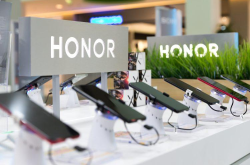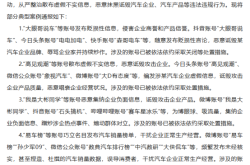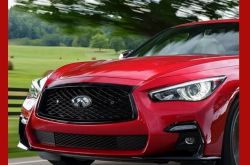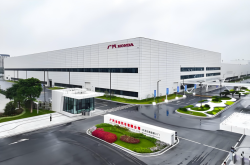Ideal and NIO Alliance: A Strategic Solution to Navigate Industry Turmoil
![]() 12/30 2024
12/30 2024
![]() 604
604
"Ideal and NIO might forge an alliance,"
This strategic move would be a rational response for both parties amid significant market disruptions.
Li Bin, CEO of NIO, has shared his perspective on the company's battery swapping losses: Firstly, NIO initially offered users lifetime free battery swapping services, leading to financial losses. Secondly, over the past two years, NIO has realized the substantial boost that its battery swapping network provides to car sales, prompting an advanced deployment of battery swapping stations.
This underscores NIO's approach as an automaker, prioritizing services over product sales, somewhat reversing the traditional business model.
Unlike other automakers that focus on product innovation to sell cars, NIO relies on enhanced services. While product innovation is constrained by material costs, setting a clear lower limit for price competition, service enhancements create an emotional perception that is difficult to quantify in terms of price, making it challenging to set an upper limit for service costs.
Consequently, the difficulty and cost of selling cars for NIO are often uncontrollable and escalating.
Analyzing NIO's business structure over the past year (Q4 2023 to Q3 2024), the automotive business gross margin hovered around 10%-13%, while other businesses recorded gross margins ranging from -25% to -9%. This indicates that NIO earned less than the industry's average gross margin (close to 15%) per car sold but incurred significantly higher service costs per car/user compared to typical equity costs.
These equity costs encompass various experiences and services provided by NIO HOUSE and NIO SPACE, free pick-up and drop-off for vehicle maintenance, substantial mall and service points, free charging and battery swapping benefits, among others. The costs associated with these service facilities and personnel are amortized and included in NIO's other business expenses.
Consequently, in public discussions about NIO, NIO car owners and non-owners have emerged as two contrasting and contentious groups.
Most NIO shareholders and non-owners believe that NIO's business model lacks commercial sustainability. Its quarterly operating losses of approximately RMB 5 billion might not be the outcome but a necessity to sustain some level of growth.
The core issue lies in NIO's vehicle models lacking product competitiveness. For instance, if the ES6 model were priced similarly to the Model Y (or even offered a two-wheel-drive version for price comparison), coupled with the added benefit of battery swapping, ES6 sales should rival those of Model Y. However, the NIO brand has increasingly struggled with such pricing power.
Long-term, NIO has rarely produced a best-selling model, and neither the NT1.0 nor NT2.0 platforms have reached the minimum platform scale (cumulatively producing only over 600,000 vehicles). This makes it virtually impossible for NIO to achieve an automotive business gross margin exceeding 20% through small-scale operations, similar to Lixiang One.
This issue mirrors the challenges faced by Great Wall Motors, where accumulated sunk costs drive up prices. However, Great Wall maintains profitability and a dominant position in the off-road sector, which NIO lacks.
In this context, while the NIO Lite project can somewhat transform NIO's business structure (low-margin automotive and negative-margin other businesses), it cannot revert NIO's business and financial structures to industry averages.
Although NIO Lite originates from the NIO brand and excludes high-service benefits, it still shares sunk costs from previous NIO investments, impacting product competitiveness. The automotive business gross margin for NIO Lite will remain low.
This inherently limits NIO Lite's survival space and growth environment. Relying solely on battery swapping for premium, NIO Lite cannot afford any actions that increase sunk costs. The launch of two additional NIO Lite models in 2025 is crucial yet challenging.
According to NIO's timeline, it aims for double growth by 2025 and profitability by 2026.
Specifically, NIO Lite targets an average monthly sales volume of 20,000 units in 2025, while the main NIO brand aims for annual sales of around 200,000 units. The Firefly project can be overlooked for now.
This structure (around 15% gross margin for automotive and over 20% for other businesses for NIO Lite) could neutralize the main NIO brand's structure (similar automotive gross margin but negative for other businesses), helping NIO achieve overall other business gross margin profitability in 2025.
In 2025, NIO's automotive gross margin is projected at 15%, with an average vehicle price ranging from RMB 200,000 to RMB 250,000, annual automotive revenue between RMB 88 billion and RMB 110 billion, and gross profit from RMB 13.2 billion to RMB 16.5 billion. NIO may still incur a net loss of approximately RMB 5 billion.
By early 2026, NIO's cumulative sales are expected to reach around 1.1 million units, half of which do not qualify for free battery swapping. Assuming a conservative battery swapping cost of RMB 5,000 per vehicle per year, sales of over 300,000 NIO Lite models in 2026, and a battery swapping gross margin exceeding 50%, other business gross profit from battery swapping could theoretically reach at least RMB 1.5 billion to RMB 2 billion in 2026.
In 2026, NIO aims to sell at least 500,000 vehicles, with an average vehicle price of RMB 200,000 to RMB 250,000 and an automotive gross margin of 15%. Automotive gross profit should be at least RMB 15 billion to RMB 18.8 billion. If expenses remain stable, NIO has a chance to achieve profitability.
The core motivation behind NIO's 2026 profitability target stems from the Hefei agreement signed in March 2024, stipulating that NIO and the Hefei government will submit an IPO application for NIO China by 2027 and complete an IPO or significant business reorganization by 2028. Otherwise, NIO will have to repurchase Hefei's shares in NIO China at an annual interest rate of 8.5%.
This raises the question: Is it too late for NIO to achieve overall profitability in 2026?
Currently, only BYD, Geely, Great Wall Motors, Changan Automobile, Chery, Lixiang One, Hongmeng Zhixing, and Thalys have achieved profitability with positive development logic. Xiaomi and Zero Run may become profitable in 2025, while XPeng and NIO might achieve profitability in 2026. FAW, Dongfeng, SAIC, GAC, and BAIC may not turn profitable during this period.
Therefore, achieving profitability in 2026 is not too late for NIO, which likely stands a chance in the next round of industry shakeouts starting in 2027 and continuing until some automakers are cleared out, merged, or allied.
However, during this phase, NIO's business quality may not significantly improve. Besides potentially turning profitable, NIO will still heavily rely on equity financing due to the high sunk costs incurred earlier, impairing its business quality.
Thus, during the shakeout phase, NIO is vulnerable to being cleared out, integrated, or allied.
Naturally, the next discussion revolves around how NIO might be adjusted by the market.
Here is my personal prediction: Ideal and NIO forming an alliance would be the optimal strategy for both to navigate the significant market shakeout.
The core rationale is that while Ideal boasts a sound financial structure, its pure electric vehicle (BEV) business faces substantial market constraints. Relying solely on its extended-range electric vehicle (EREV) business, Ideal finds it challenging to navigate the industry shakeout alone. An alliance with NIO offers a feasible path for Ideal to swiftly and effectively complement its BEV business.
Of course, this presumes that Ideal will not heavily invest in its BEV business due to the following reasons:
1. Ideal's BEV target customers should differ from its existing L-series customers, representing incremental users to capture the incremental market without cannibalizing the existing one.
2. However, in the RMB 200,000 to RMB 500,000 BEV market, Ideal struggles to identify a sizable non-family user group.
3. This BEV market is already saturated with formidable competitors like Tesla, Xiaomi, NIO, Hongmeng Zhixing, XPeng, and Avita, suggesting that Ideal's BEV gross margin is unlikely to exceed 15% (or may even be lower).
This positions Ideal's BEV business in a dilemma: intense competition hinders scalable growth, and the BEV business significantly drags down Ideal's overall financial structure, which is difficult to repair.
In this context, there is no reason for Ideal to let its BEV business pull it into a passive industry development trend, implying a low likelihood of Ideal proactively entering the BEV market due to low win rates and odds.
However, NIO's business and assets perfectly align with Ideal's BEV vision and needs:
1. NIO's (including NIO Lite's) target customers fall within the RMB 200,000 to RMB 500,000 range, perfectly aligning with Ideal's brand. Crucially, NIO's customer base represents a pure increment for Ideal.
2. Although NIO's automotive gross margin cap is less than 20% (possibly only 15%), Ideal avoids investing its own resources, allowing the Ideal brand (or EREV business) to maintain a gross margin exceeding 20%.
An alliance between Ideal and NIO holds significant potential for business synergy, easily achieving a 1+1>2 effect:
1. Alliance scale will rapidly expand.
2. Joint procurement for electrification and component systems optimizes costs.
3. Collaborative R&D/investment in 'intelligence' enables shared intelligent systems and autonomous driving solutions, halving R&D expenses for both parties.
4. NIO can leverage the alliance to gradually implement substantial cost reductions driven by new alliance governance and management changes.
5. The cost-effective Ideal-NIO alliance will have strong price competitiveness, better positioning it to navigate the industry shakeout.
This alliance benefits both Ideal and NIO more than it harms, driving their potential collaboration.
Theoretically, the manufacturing industry recognizes an optimal economic scale, with manufacturing costs exhibiting a U-shaped curve. After reaching a certain scale, further expansion becomes uneconomical. This provides a theoretical foundation and industry space for an Ideal-NIO alliance.
From this perspective, NIO's long-term survival outlook presents a more favorable outcome.
Of course, this requires successful progress on the NIO Lite project and the main NIO brand avoiding further mistakes (or additional sunk costs), positioning NIO to stay in the game.






